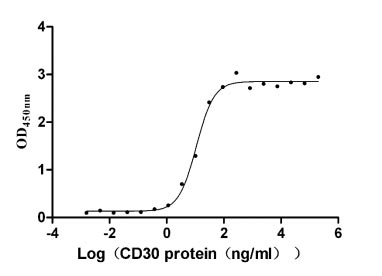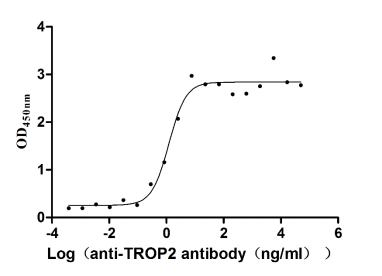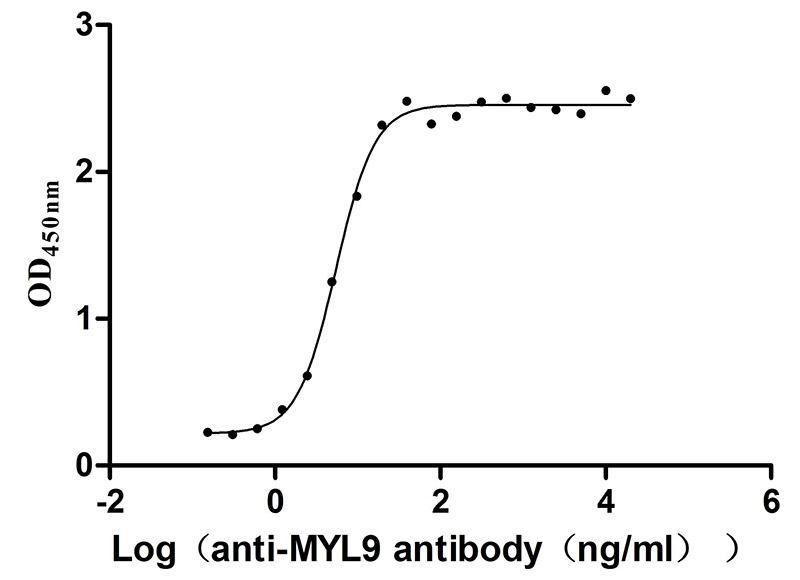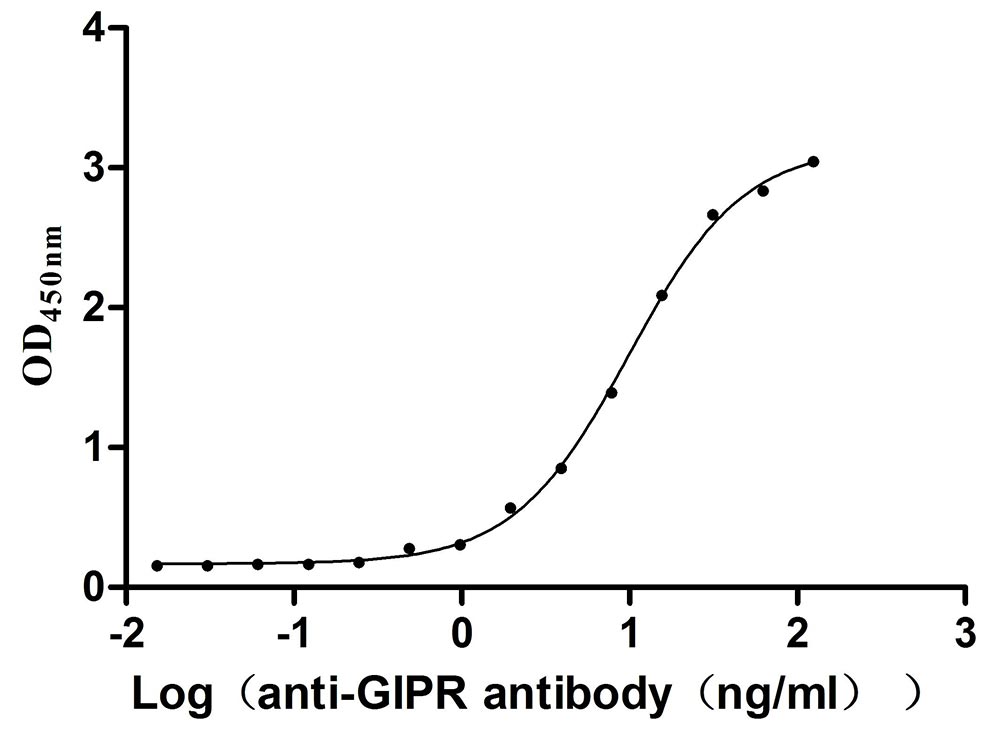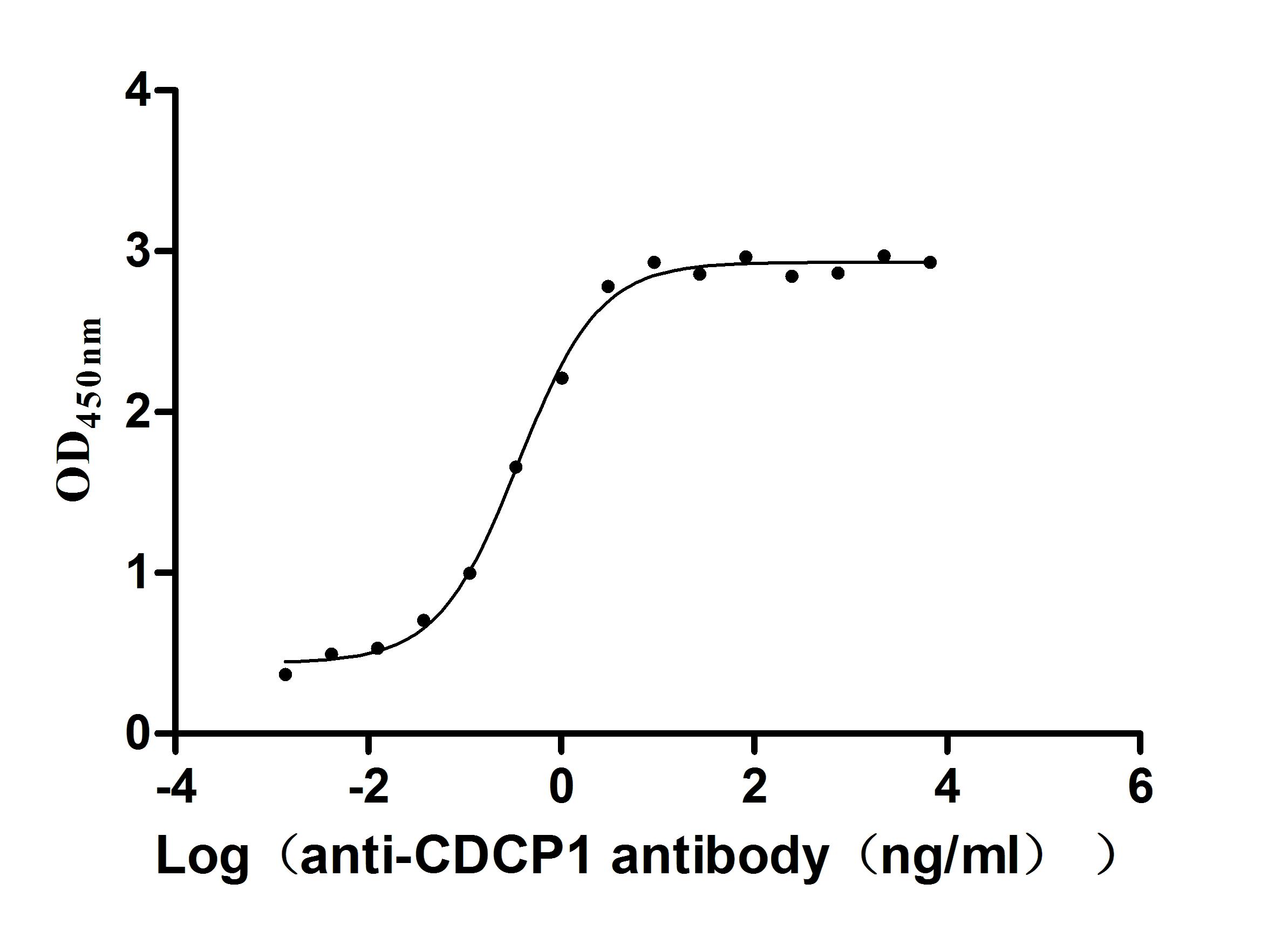Recombinant Human Claudin-16 (CLDN16 PCLN1)
-
中文名稱:
-
貨號:CSB-YP211884HU
-
規格:
-
來源:Yeast
-
其他:
-
中文名稱:
-
貨號:CSB-EP211884HU
-
規格:
-
來源:E.coli
-
其他:
-
中文名稱:
-
貨號:CSB-EP211884HU-B
-
規格:
-
來源:E.coli
-
共軛:Avi-tag Biotinylated
E. coli biotin ligase (BirA) is highly specific in covalently attaching biotin to the 15 amino acid AviTag peptide. This recombinant protein was biotinylated in vivo by AviTag-BirA technology, which method is BriA catalyzes amide linkage between the biotin and the specific lysine of the AviTag.
-
其他:
-
中文名稱:
-
貨號:CSB-BP211884HU
-
規格:
-
來源:Baculovirus
-
其他:
-
中文名稱:
-
貨號:CSB-MP211884HU
-
規格:
-
來源:Mammalian cell
-
其他:
產品詳情
-
純度:>85% (SDS-PAGE)
-
基因名:CLD16
-
Uniprot No.:
-
別名:Claudin-16; Paracellin-1; PCLN-1; CLDN16 PCLN1
-
種屬:Homo sapiens (Human)
-
蛋白標簽:Tag?type?will?be?determined?during?the?manufacturing?process.
The tag type will be determined during production process. If you have specified tag type, please tell us and we will develop the specified tag preferentially. -
產品提供形式:Liquid or Lyophilized powder
Note: We will preferentially ship the format that we have in stock, however, if you have any special requirement for the format, please remark your requirement when placing the order, we will prepare according to your demand. -
復溶:We recommend that this vial be briefly centrifuged prior to opening to bring the contents to the bottom. Please reconstitute protein in deionized sterile water to a concentration of 0.1-1.0 mg/mL.We recommend to add 5-50% of glycerol (final concentration) and aliquot for long-term storage at -20℃/-80℃. Our default final concentration of glycerol is 50%. Customers could use it as reference.
-
儲存條件:Store at -20°C/-80°C upon receipt, aliquoting is necessary for mutiple use. Avoid repeated freeze-thaw cycles.
-
保質期:The shelf life is related to many factors, storage state, buffer ingredients, storage temperature and the stability of the protein itself.
Generally, the shelf life of liquid form is 6 months at -20°C/-80°C. The shelf life of lyophilized form is 12 months at -20°C/-80°C. -
貨期:Delivery time may differ from different purchasing way or location, please kindly consult your local distributors for specific delivery time.Note: All of our proteins are default shipped with normal blue ice packs, if you request to ship with dry ice, please communicate with us in advance and extra fees will be charged.
-
注意事項:Repeated freezing and thawing is not recommended. Store working aliquots at 4°C for up to one week.
-
Datasheet :Please contact us to get it.
靶點詳情
-
功能:Plays a major role in tight junction-specific obliteration of the intercellular space, through calcium-independent cell-adhesion activity. Involved in paracellular magnesium reabsorption. Required for a selective paracellular conductance. May form, alone or in partnership with other constituents, an intercellular pore permitting paracellular passage of magnesium and calcium ions down their electrochemical gradients. Alternatively, it could be a sensor of magnesium concentration that could alter paracellular permeability mediated by other factors.
-
基因功能參考文獻:
- Data suggest that Pdzrn3 mediates endocytosis of dephosphorylated CLDN16 and represents an important component of CLDN16-trafficking machinery in renal tube epithelial cells. (Pdzrn3 = PDZ domain containing RING finger 3 protein; CLDN16 = claudin 16) PMID: 28623232
- detected a novel mutation in CLDN16 for the first time. The clinical and genetic findings from this study will help to expand the understanding of this rare disease, FHHNC PMID: 27067446
- claudin-16 gene (CLDN16) mutations result in amelogenesis imperfect. PMID: 26426912
- CLDN16 mutations are associated with familial hypomagnesaemia with hypercalciuria and nephrocalcinosis. PMID: 25477417
- 1,25(OH)2 VitD transcriptionally inhibits renal claudin-16 expression by a mechanism sensitive to CaSR and Mg(2+). PMID: 25557732
- A novel CLDN16 mutation has been identified in a large consanguineous family with familial hypomagnesaemia with hypercalciuria and nephrocalcinosis. PMID: 24321194
- These results suggest that STX8 mediates the recycling of CLDN16 and constitutes an important component of the CLDN16 trafficking machinery in the kidney. PMID: 24659781
- Six different mutations of CLDN16 were detected (five missense and one nonsense); three of the missense mutations were previously unknown (p.Cys80Tyr, p.Lys183Glu, and p.Gly233Arg). PMID: 22422540
- A novel mutation of CLDN16 gene is responsible for familial hypomagnesaemia in Turkish children. PMID: 21669885
- Claudin-16 plays a role beyond that of an initial metastasis repressor in breast cancer. PMID: 21717372
- Claudin 16 gene revealed homozygosity for the p.K183E(AAA>GAA) C. 547A>G indicating the diagnosis of hypomagnesemia with hypercalciuria and nephrocalcinosis. PMID: 21848011
- Multiple distinct mutations in the CLDN16 and CLDN19 genes have been found responsible for familial hypomagnesemia with hypercalciuria and nephrocalcinosis. PMID: 21186073
- Elevated CLDN16 gene expression was suggested to be involved in the development of breast cancer and to be a biomarker and target treatment for breast cancer. PMID: 20664984
- Mg(2+) depletion markedly increased and Mg(2+) load decreased endogenous claudin-16 mRNA levels in calcium-sensing receptor-transfected HEK293 cells compared with native HEK293 cells. PMID: 20511716
- Mutations in claudin 16 that affect interaction with ZO-1 lead to lysosomal mistargeting PMID: 14628289
- Paracellin-1 modulates paracellular conductance and not transcellular transport; it does not form magnesium ion-selective paracellular channels PMID: 16234325
- We conclude that FHHNC can result from mutations in Cldn16 that affect intracellular trafficking or paracellular Mg2+ permeability PMID: 16528408
- We present a patient with a homozygous truncating CLDN16 gene mutation (W237X) who had early onset of renal insufficiency despite early diagnosis at 2 months. PMID: 16924549
- paracellin-1 might act as selectivity filter for the paracellular movement of ions and water during stimulated secretion PMID: 17551748
- Familial hypomagnesemia with hypercalciuria and nephrocalcinosis (FHHNC) is a rare autosomal recessive tubular disorder caused by CLDN16 mutations PMID: 18003771
- Claudin-16 plays a role beyond that of an initial metastasis repressor in this cancer type PMID: 18442037
- Mutation analysis reveals compound heterozygous mutations in the claudin 16 gene (CLDN16) in two siblings affecting the second extracellular loop of claudin 16 and leading to complete loss of the protein. PMID: 18816383
- The expression of claudins-2, -3 and -4 in 16 rectal well-differentiated endocrine neoplasms was studied PMID: 19082451
- Familial hypomagnesemia with hypercalciuria and nephrocalcinosis: unusual clinical associations and novel claudin16 mutation in an Egyptian family. PMID: 19165416
顯示更多
收起更多
-
相關疾病:Hypomagnesemia 3 (HOMG3)
-
亞細胞定位:Cell junction, tight junction. Cell membrane; Multi-pass membrane protein.
-
蛋白家族:Claudin family
-
組織特異性:Kidney-specific, including the thick ascending limb of Henle (TAL).
-
數據庫鏈接:
Most popular with customers
-
Recombinant Macaca fascicularis Angiotensin-converting enzyme (ACE2), partial (Active)
Express system: Mammalian cell
Species: Macaca fascicularis (Crab-eating macaque) (Cynomolgus monkey)
-
Recombinant Human Mucin-16 (MUC16), partial (Active)
Express system: Mammalian cell
Species: Homo sapiens (Human)
-
Recombinant Human Glypican-3 (GPC3) (G537R), partial (Active)
Express system: Mammalian cell
Species: Homo sapiens (Human)
-
Recombinant Human Tumor necrosis factor ligand superfamily member 8 (TNFSF8), partial (Active)
Express system: Mammalian cell
Species: Homo sapiens (Human)
-
Recombinant Human Tumor-associated calcium signal transducer 2 (TACSTD2), partial (Active)
Express system: Mammalian cell
Species: Homo sapiens (Human)
-
Recombinant Human Myosin regulatory light polypeptide 9 (MYL9) (Active)
Express system: Yeast
Species: Homo sapiens (Human)
-
Recombinant Mouse Gastric inhibitory polypeptide receptor (Gipr), partial (Active)
Express system: Mammalian cell
Species: Mus musculus (Mouse)
-
Recombinant Human CUB domain-containing protein 1 (CDCP1), partial (Active)
Express system: Mammalian cell
Species: Homo sapiens (Human)


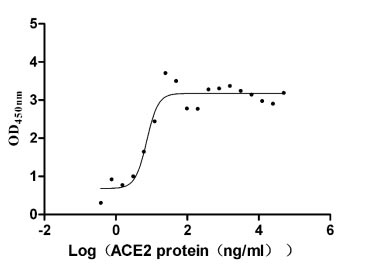
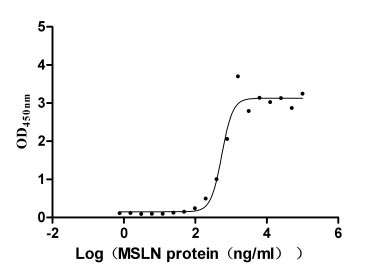
-AC1.jpg)
